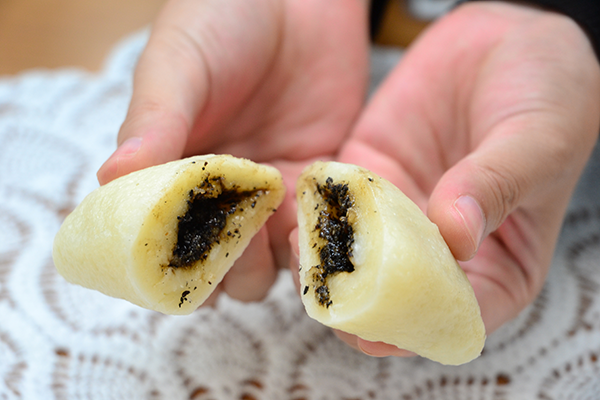Konamon is a Japanese word that means ‘food made from flour’, and describes a wide range of dishes ranging from okonomiyaki (Japanese savory pancakes) to noodle-based dishes. It is used throughout Japan to refer to the above dishes and the like, but in Northern Japan, and specifically the Northern Iwate and Southern Aomori areas it is a word that describes the traditional local food culture that has developed in the area for hundreds of years.
Since times long past the Hachinohe area has been plagued by cold winds coming from the Pacific Ocean that star from spring and last into summer. These cool winds are called yamase in the local dialect, and they were severely damaging to farmer’s crops, and particularly hampered the production of rice, the backbone of Japan’s culture and diet. The yamase winds contributed to countless years of famine and failed cropped, and so the people of the area began to grow and rely on more cold-weather hardy crops such as wheat, buckwheat, millet and more. These multi-grain crops were grown, processed and ground into flour which the local people used to make a variety of dishes. Slowly over the years these unique dishes and practices created a unique culture that became part of the area’s identity. A way of life borne from hardship, starvation, and struggle has gradually been transformed through the centuries by the people’s resilience and adaptability into a wonderful culinary culture unlike anywhere else in Japan.
One of the most definitive examples of the Konamon culinary culture is the Nanbu senbei. In most areas of Japan, a senbei is a type of rice cracker, but in the rice-poor Hachinohe area, senbei were made with flour of different grains. The Nanbu senbei of today is a wheat flour cracker grilled in cast-iron molds. It is a classic and simple food that continues to enjoy immense popularity amongst the locals today and is seen as a soul food of the are and a source of pride. These simple crackers are usually made with just water, salt and flour, but can come with a variety of toppings such as peanuts, sesame, and even chocolate. The plain senbei are also the base for another regional specialty, Hachinohe’s famous senbei soup, which consists of a simple chicken- or fish-based soup with a variety of vegetables in which senbei crackers are added in at the very end. This is a warming, home-cooked meal that is especially popular during the cold winter months of northern Japan.
Outside the Nanbu senbei, there are a plethora of other Konamon dishes to discover in the Hachinohe area. From the buckwheat noodles (soba) of Hashikami to the soup dumplings (kakke) and sweet dumplings (kinka-mochi) of Sannohe, there is sure to be a unique dish in the area that is right for any visitor. A great way to find out these hidden gems of the area is to take some of the local walking tours that are offered in the area, especially those of the smaller towns. Outside of that, there isn’t much more to do than dig in, try something new, and eat!
Hashikami Wase Buckwheat
The Hashikami Wase is a variety of buckwheat that has been the go-to buckwheat for making noodles in the Aomori prefecture since the Taisho period (1912 – 1926). What makes it so popular is its robust, full flavor and great texture. ‘Grown in Hashikami, Made in Hashikami, & Eaten in Hashikami’ is a motto proudly used by the people who live in Hashikami. From seed to plant, plant to flour, flour to noodle, the people of the town tenderly tend to their buckwheat fields, and its importance is felt throughout the community.
Wase buckwheat came into notice in 1913. During this time, the cool Tohoku winds of the yamase had a profound influence on agriculture. The cold winds stunted crop growth, and famine was rife in the area. But the buckwheat plant is resilient to cold and even as other crops were failing the people were able to yield a good crop. This saved many people from starvation and the plant has played an integral role in the community ever since.
The seeds of the Hashikami Wase were eventually sent to the Aomori Prefectural Agricultural Research Center, where after testing and verifying its exceptional potential for cultivation, it was officially given the name ‘Hashikami Wase’ in 1918.
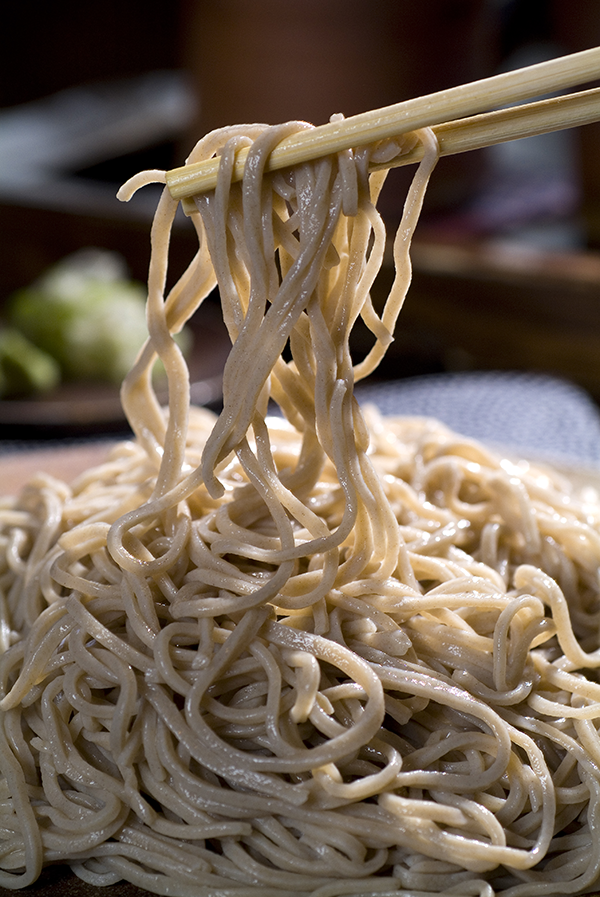
Nanbu Senbei (wheat crackers)
Nanbu senbei are a special type of wheat crackers found in the southeastern area of Aomori and the northern part of Iwate Prefecture. They are made from a dough of wheat flour mixed with water, which is then grilled in a circular cast-iron press. As the cast iron mold is clamped down some of the dough overflows and cooks on the outside of the mold. This part is called the mimi in Japanese and is often the most sought-after part, much the top of a muffin.
The town of Sannohe in that Hachinohe Area is quite famous for its Nanbu senbei. Sannohe’s senbei are renowned for their crips and light texture, and after even just one bite of one of these senbei and you are sure to be hooked. Perfect as a treat to have with tea or coffee, or even as a snack to munch on alongside a refreshing beer, the Sannohe senbei are a versatile snack. The senbei come in different flavors including the original sesame seed, wild sesame, shrimp, peanut, and more. Each store has their own specialties so the options are endless!
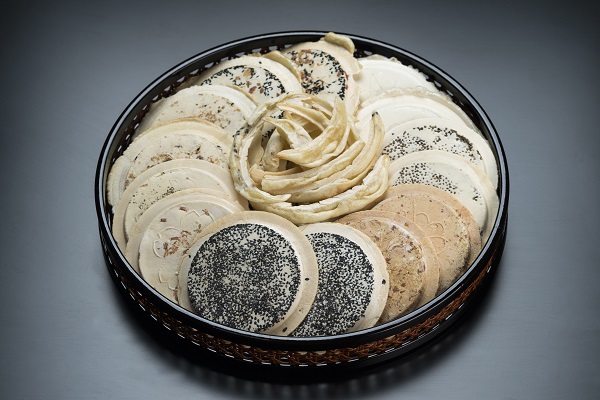
Hittsumi & Kushi-Mochi
Hittsumi is a local soup dumpling that is similar to a dish called suiton found elsewhere in Japan. Wheat flour is kneaded, pulled thin, and then torn off in strips or circles and boiled. The pulling action of making the dough is said to have given rise to this dish’s name. The dumplings are usually served in a soy sauce and vegetable-based broth soup, with various other ingredients being added in depending on the season. A hearty and rich meal, this country-style dish is rich in nutrients.
Kushi-mochi is another local specialty that is often found in Sannohe. Made from a mixture of wheat and rice flour, the dough is formed into round flat patties, skewered and then grilled. Eaten during events on sunny days, and also popular as a casual snack, it is seen as a local soul food by many people. The treats are grilled over charcoal, imparting them with a slightly smoky and rich scent, and served commonly slathered with sweet miso and wild sesame.
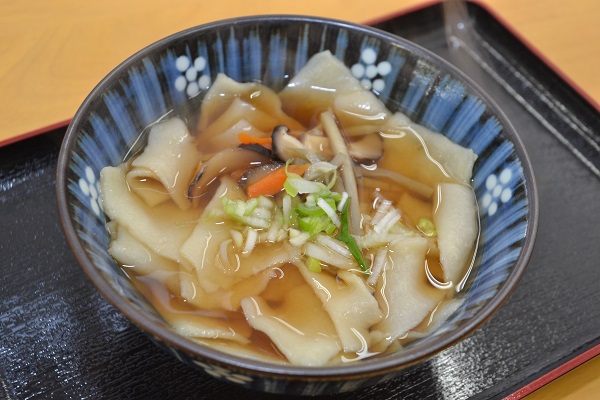
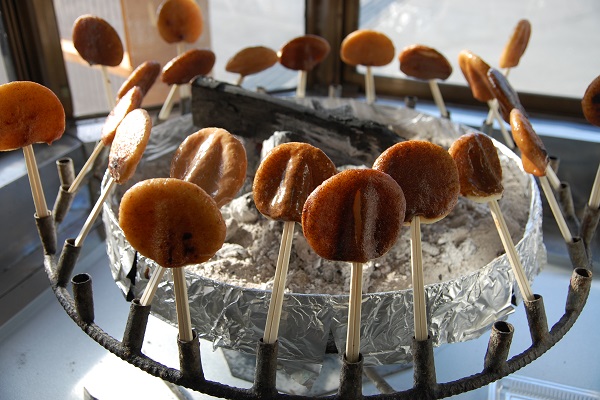
Suiton & River Crab Soup
Suiton & River Crab Soup is a unique dish that pairs simple dumplings with a thick, rich soup. The base of the soup is made by finely and painstakingly grinding down whole crabs to make an intensely flavorful stock. Suiton, or hittsumi in the local dialect, are simple hand-pulled dumplings made with wheat grown right in the Nanbu area. They have a plump texture that is a perfect match for the thick soup.
In the past, this dish was made by locals who would simply take crabs from the local river to prepare for that night’s dinner. But over the years, the crabs began to disappear from the river and eventually so did the dish from the town. 15 years after the dish was last seen on menus, a daring restaurant started importing river crabs from southern Japan as a way to revive the tradition. The effort was successful and the dish has become popular again.
Suiton & River Crab Soup has since been featured on various tv programs and etc., ensuring its popularity for the near future. This soup is a culinary experience not quite like any other in Japan, it is well worth the trip off the beaten path to find.
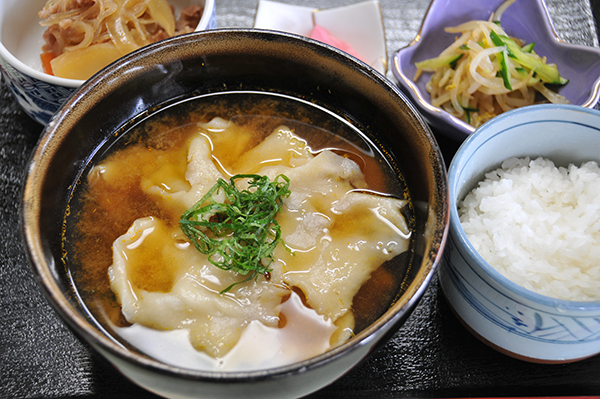
Tsutsuke (also called Kakke)
Tsutsuke is a classic regional countryside dish made from either wheat or buckwheat dough that is flattened, almost like pasta, and cut into triangles. Often served with a miso paste mixed with garlic or spring onions, the triangles are cooked in a pot with daikon radish, long onion, tofu, and more. What makes the tsutsuke so delicious is its al dente texture and flavor. To achieve the perfect texture takes skill, and the dumplings are added to the soup stock one at a time to prevent sticking and taken out once they have floated to the top.
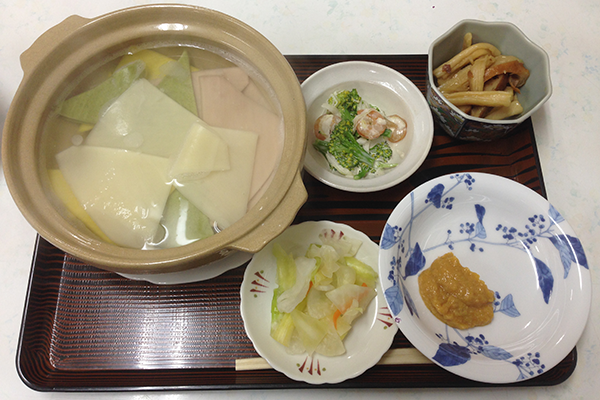
Kinka-mochi
Kinka–mochi is a local specialty treat made by shaping a flour dough into a gyoza-like shape, filling it with a sweet miso-and-walnut paste, and then boiling it. Made from flour unlike rice as its name (mochi) would suggest, it is another classic example of the local Konamon culture. Originally, kinka-mochi treats were given as offerings on the during Obon on the Buddhist altar that many Japanese people have in their homes. Nowadays they are a favorite snack and have a variety of interesting fillings. The walnuts in the filling give the treat a nice crunch, while the brown sugar -and-miso paste oozes out in copious amounts once bitten into. The springiness of the outside dough and its slightly sweet, slightly salty flavor balance the treat well in this classic blast from the past treat.
